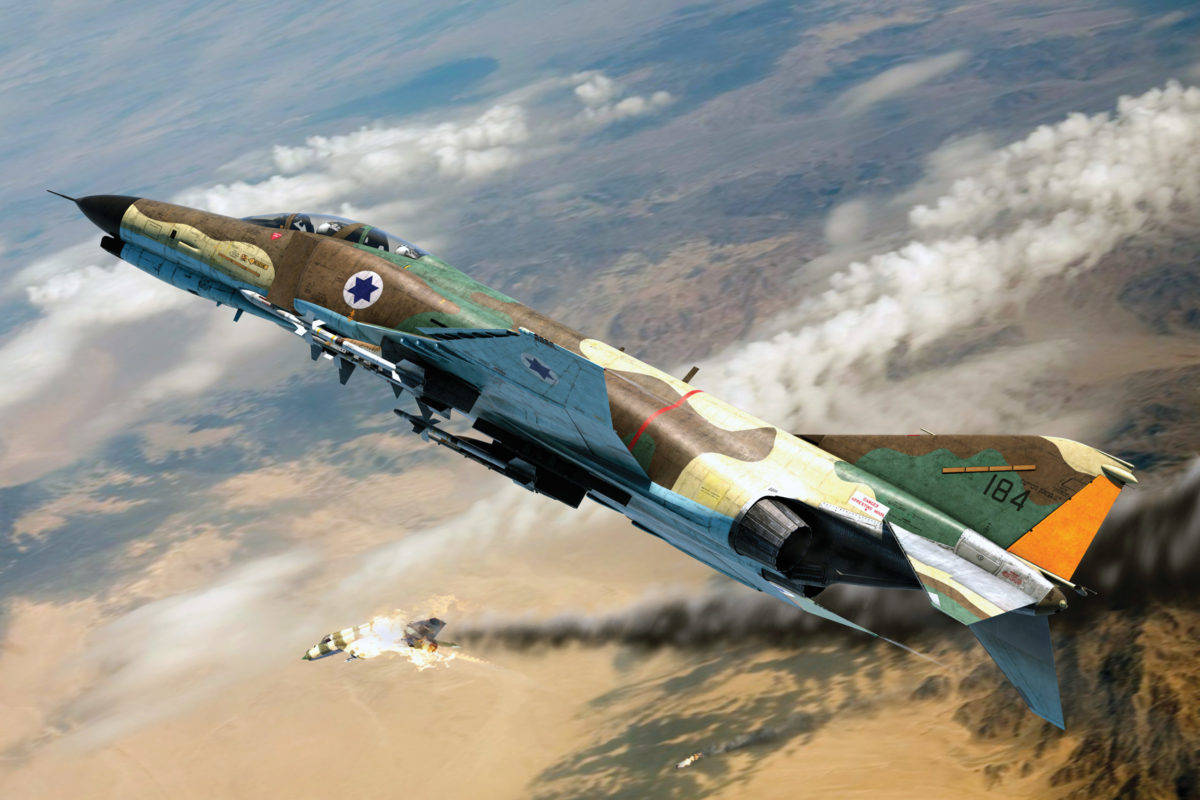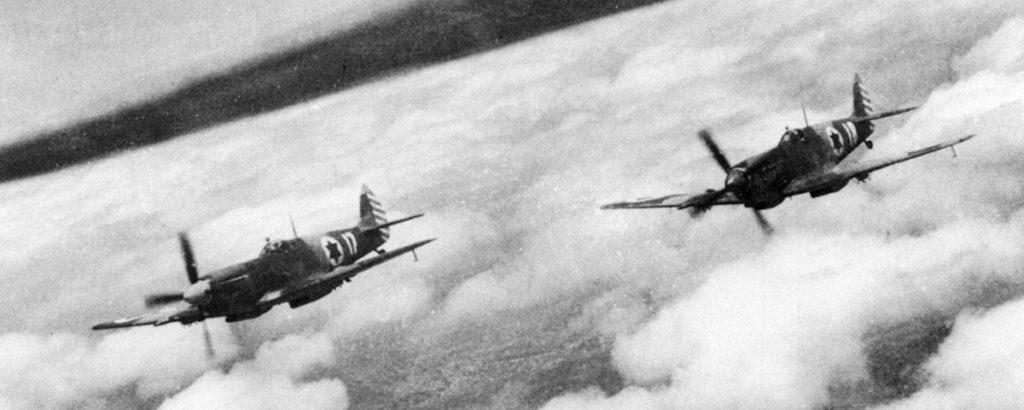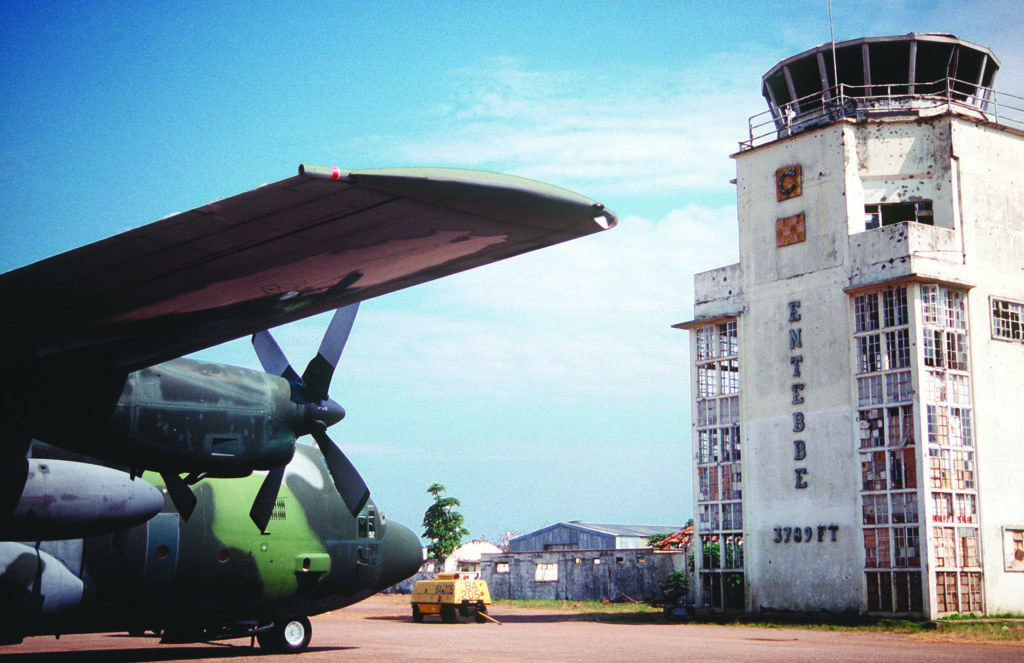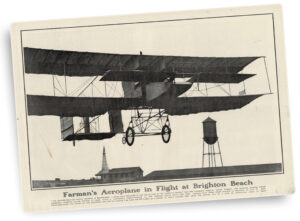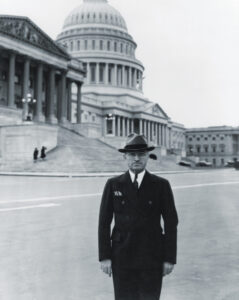The end of the 1967 Six-Day War left Israeli forces on the east side of the Suez Canal and Egyptian forces on the west side, but there was no peace agreement, only an informal ceasefire. On March 8, 1969, a frustrated Egyptian Presi-dent Gamal Abdel Nasser declared an end to the ceasefire and started the “War of Attrition.” Egyptian artillery began a heavy bombardment of Israel Defense Forces (IDF) positions on the eastern side of the canal with the hope of forcing the Israeli government into concessions or a withdrawal. The IDF artillery was no match for the Egyptians, so the Israelis responded with heavy Israeli Air Force (IAF) strikes on Egyptian artillery and military positions along the canal.
Egyptian MiGs tried to stop the attacks, but their poorly trained pilots were decimated by the well-trained Israelis flying French-built delta-wing Mirage IIIs—“Triangles.” The Egyptians began to move SA-2 surface-to-air missiles close to the canal to protect their artillery, prompting the IAF to launch a series of attacks against the SAM sites.
Enter the phantom
On September 5, 1969, the first F-4E Phantom IIs arrived in Israel from the United States. The Phantom—quickly dubbed the “Hammer” by the IAF—brought a new dimension to the conflict as it took over most of the attacks on the missile sites. By late November 1969, the SAMs had been neutralized and, for the next four months, the Egyptians did not attempt to advance any more missiles toward the canal.
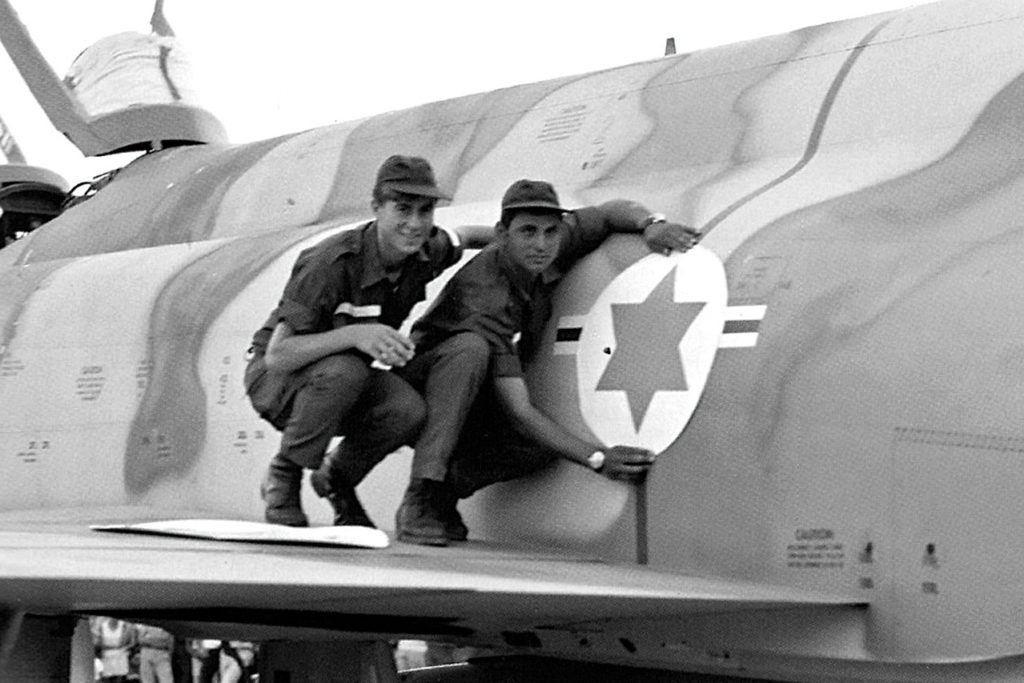
But the Egyptians showed no willingness to negotiate. Israel escalated the air war beginning in January 1970 with Operation Pricha (Blossom), as Phantoms began to fly bombing raids deep into Egypt to attack strategic targets such as the Egyptian commando headquarters. The Israelis hoped the strikes would force President Nasser out of office or at a minimum compel him to declare a ceasefire.
The new January deep strikes by Phantoms were very damaging and did indeed threaten the Nasser regime. But rather than accede to Israeli demands, on January 24 Nasser flew to Moscow to plead—indeed demand—that his Soviet sponsors provided Egypt with a reliable air defense network.
A major defeat of their main Arab client state was unacceptable to the Soviets, so beginning in March 1970 the USSR sent the complete 18th Special Anti-Aircraft Rocket Division to Egypt. The unit was equipped with the latest SA-2 SAMs and the newer SA-3, and also included three squadrons from the 135th Fighter Aviation Regiment of the Air Defense Forces equipped with the MiG-21MF. Soon there were 10,000 Soviet advisers in Egypt helping the Egyptians to extend the SAM missile sites toward the Suez Canal.
The Soviet MiG-21 “Fishbed” units were based south of Cairo and did not share air bases with the Egyptians, so there was little interaction between the Russian and Egyptian pilots. The Soviets did not bother to request information about Israeli tactics from their Egyptian counterparts, mocked the Egyptian pilots’ courage and disparaged their flying skills. Since few Soviets spoke Arabic, they brought their own radar controllers, which made it easy for the many Russian-speaking immigrants in Israeli intelligence to monitor Soviet radio transmissions.
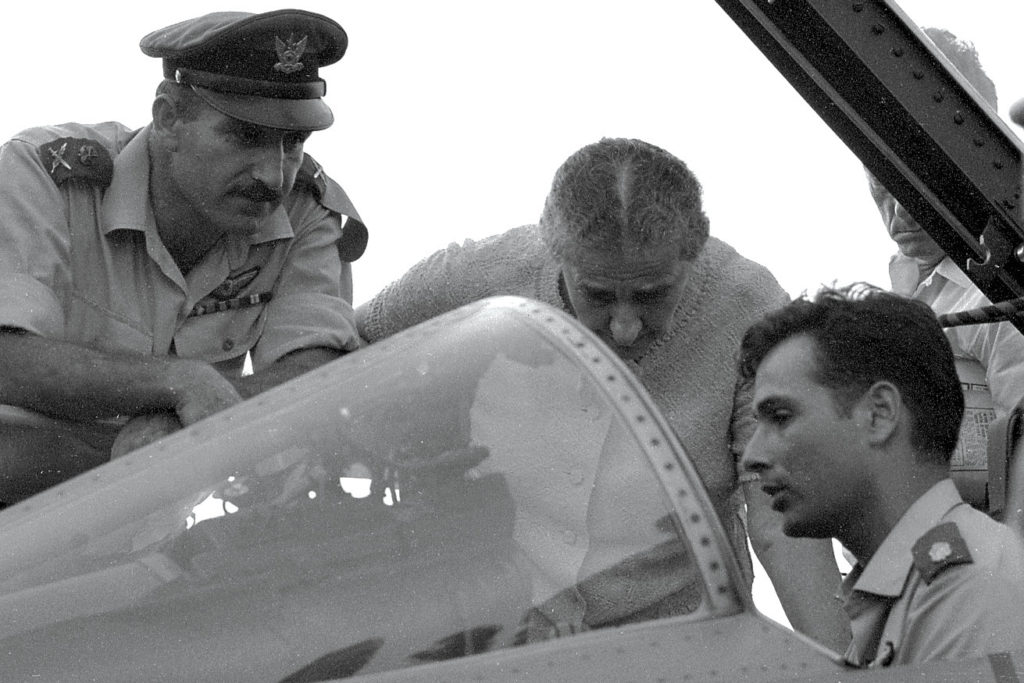
Death of an ace
After the Soviets arrived, Israeli Minister of Defense Moshe Dayan became concerned that Russian personnel would be killed in the deep-penetration Phantom attacks, so in April 1970 he halted the deep strikes and the IAF returned to attacking the new SAM batteries approaching the Suez Canal. But despite repeated strikes on the batteries, the Soviets slowly advanced the missile sites closer to the canal, and on June 30 Soviet-operated SAMs downed two Israeli Phantoms. In July the new sites shot down two more F-4s, killing one of the IAF’s most outstanding squadron commanders, Shmuel Hetz.
While the SAMs took a toll, the air combat story was different. There were regular air battles over Egypt south and west of Suez City, an area dubbed “Texas” by the IAF pilots because they styled themselves as gunfighters in the Wild West (IAF pilots preferred to rely on their internal cannon instead of air-to-air missiles). The battles resulted
in heavy Egyptian losses, which made the Egyptians reluctant to engage Israeli fighters.
The arrival of the F-4s provided new air-to-air capabilities—long-range radar and AIM-7 Sparrow radar-guided missiles—that the Mirages lacked. To catch the MiGs, the aggressive Israeli fighter pilots began setting traps for the Egyptians codenamed “Rimon” (Pomegranate), with the F-4s and Mirages working together. One such trap involved flying transport aircraft or helicopters into the Suez Canal area and, when MiGs were launched toward them, Israeli fighters flying below the Egyptian radar climbed and intercepted them. During the War of Attrition, close to 100 Egyptian MiGs were downed in air combat against the loss of only four Mirages, with two pilots bailing out over Israeli territory.
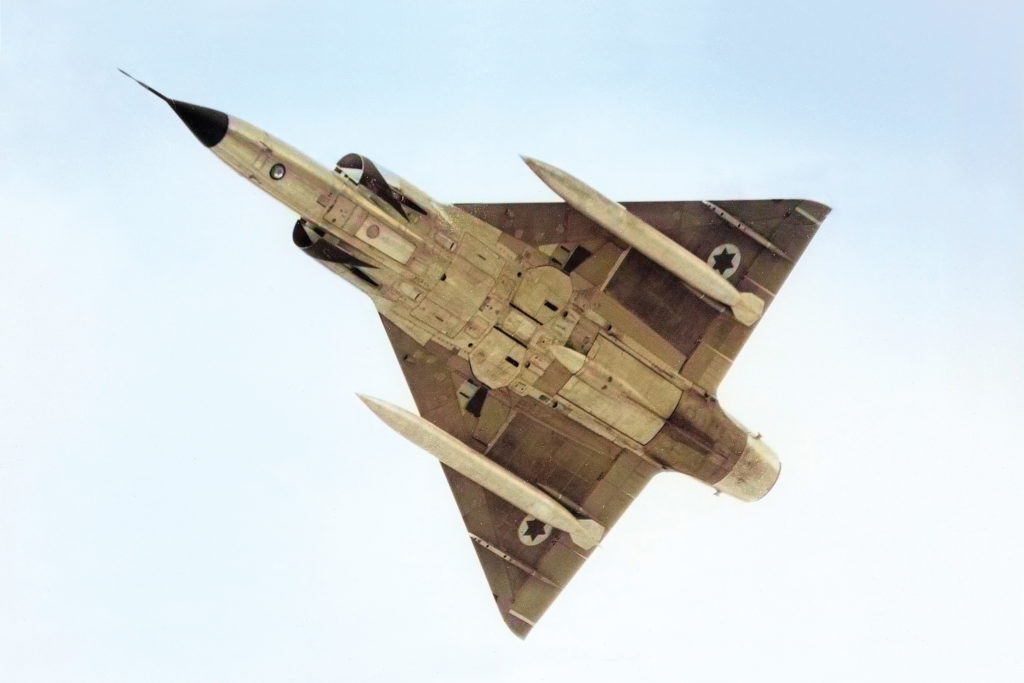
In June 1970 Israeli radio intelligence reported that the Soviet pilots were beginning to fly combat patrols to supplement the Egyptian MiGs. When Soviet MiGs tried to intercept an IAF reconnaissance flight over Cairo, defense minister Dayan ordered the IAF to break off contact whenever they appeared, much to the Israeli pilots’ frustration.
This Israeli reluctance to confront the Soviets seemed to embolden them, and they moved their SAM sites closer and closer to the Suez Canal. The IDF chief of staff, Lt. Gen. Chaim Bar-Lev, and IAF commander Brig. Gen. Mordechai “Motti” Hod began pushing Dayan hard for more aggressive actions against the Soviets. On July 25 the dynamic changed when Soviet MiGs attacked and damaged an Israeli A-4 Skyhawk that had to make an emergency landing at a base in the central Sinai desert. After the attack on the Skyhawks, Prime Minister Golda Meir changed course and decided to confront the Soviets.
Borrowing “Operation Bolo”
The IAF developed an operation, Rimon 20, in which it would send seemingly vulnerable aircraft into Egyptian airspace to induce the Soviets to attack. The concept was similar in execution to the Vietnam War’s Operation Bolo, led by legendary U.S. Air Force fighter pilot Colonel Robin Olds. The first part of Rimon 20 would simulate a high-altitude flight of two photoreconnaissance Mirage IIIs. But instead of the normal two unarmed photo Mirages, the force would consist of four fully armed Mirages flying in tight formation to give the appearance of a two-ship recon flight on Soviet radar.
The second part of the operation consisted of a four-ship flight of F-4Es that would simulate an A-4 ground-attack mission along the canal. Meanwhile, four Mirages would fly low under Soviet radar coverage well to the south of the F-4s and four more Mirages would be on quick-reaction alert at Rephidim air base in the central Sinai.
Each participating squadron was told to fill the attacking force with its best pilots. There was intense competition in the squadrons about which pilots would fly the missions and, under the watchful eyes of IAF commander Hod and the wing commanders, each squadron commander picked the best pilots, mostly MiG killers.
The “bait” flight simulating the reconnaissance aircraft would consist of four Mirages from 119 Squadron from Tel Nof air base. Squadron commander Lt. Col. Amos Amir led the flight, Asher Snir was number two, Avraham Salmon number three and Avi Gilad number four.
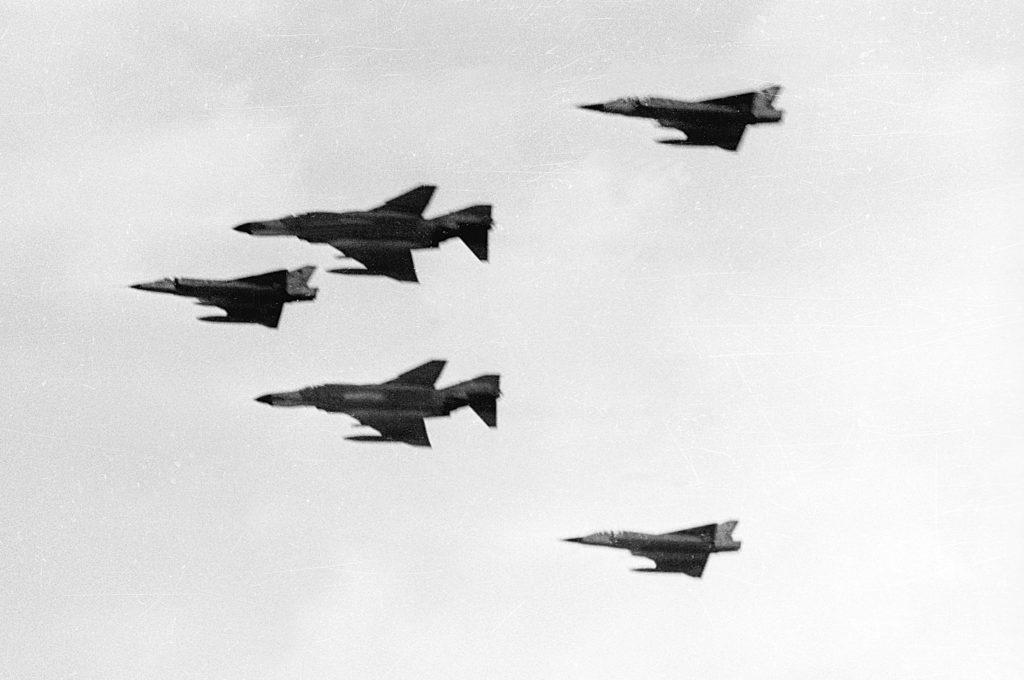
The four F-4Es that would fly the A-4 attack profile over the canal came from Ramat David air base’s 69 Squadron. Their pilots hoped to use the Phantoms’ long-range radar to locate the MiGs and perhaps launch their Sparrows. The four-ship element would be led by squadron commander Avihu Ben-Nun. His number two was the second deputy squadron commander, Aviem Sella; number three was deputy squadron commander Ehud Hankin; and Uri Gil was number four. Since the F-4s had been mainly used for ground attack, their pilots’ victory scores were not as robust as the 24 of the Mirage pilots in the bait flight—“only” seven MiG kills in the Phantom flight.
The low-altitude flight of four Mirages from 117 Squadron also came from Ramat David, led by squadron commander Uri Even-Nir, with Itamar Neuner as number two, Yehuda Koren as number three and Kobi Richter as number four. A reserve flight of four Mirages from 101 Squadron, led by squadron commander Iftach Spector, would sit on alert at Rephidim.
Recommended for you
The operation was scheduled for July 29, and on the 27th the commanders and flight leads flew to Tel Aviv for the overall mission briefing at Sde Dov airfield. At the briefing Dayan told the group they were going to fight the Soviets and made it clear that they were to shoot down as many MiGs as possible. At the same time, Brig. Gen. Hod also emphasized that while the IAF pilots would use their normal tactical two-ship flights, in which the first member of the flight who spotted the MiGs led the attack, the pairs must stay together. It was critical that no IAF aircraft be shot down—“their number doesn’t matter, ours must be zero!” As usual Hod would hold a stopwatch on the battle.
“We were told it was time to show the Russians what ‘Texas’ is,” Ben-Nun later said of the briefing. “We were very excited, not afraid, but we did not know what to expect, because we thought the Russians would have different and more advanced armament.”
When the July 29 mission was postponed, many of the IAF pilots thought the government had lost its nerve, but it was rescheduled for the next day. At 2 p.m. on July 30 the four fully armed Mirage IIIs from 119 Squadron took off and began to fly a standard reconnaissance profile, starting with a low-altitude flight into Egyptian airspace in the far south on the southern shores of the Gulf of Suez, where the Soviet MiGs were known to operate. The Mirages then climbed and turned north at 35,000 feet, the standard altitude for a photorecon mission, in tight formation to look like a two-ship photo flight on radar. The Triangles then continued flying the normal route toward Suez City, using the standard reconnaissance radio calls.
Twelve Soviet MiG-21MFs took the bait and launched from two separate bases to intercept the “reconnaissance” Mirages. At about the same time the F-4s from 69 Squadron simulating the A-4 attack struck an Egyptian radar site, and eight more MiGs were launched from additional bases and sent toward the supposed Skyhawks.
Splash the MiGs!
Israeli fighter radar controllers detected the MiGs. The F-4Es began to close on them from the east, but the low flight of four 117 Squadron Mirages was well south of the Phantoms on station over the Sinai and was experiencing problems. The leader and number two were forced to abort with engine trouble, so Yehuda Koren and Kobi Richter, numbers three and four, entered the fight as a pair late.
The first two four-ship MiG formations approached the bait Mirages, call sign Arbel, in trail from the west and the Mirages turned east to bring the MiGs closer to the Red Sea border between Israel and Egypt. The MiGs were 20 miles behind them as the Mirages approached the Red Sea and turned back west. Flight leader Amir called “Arbel, drop tanks” as the Phantoms also climbed into the battle, but the F-4s had a confused radar picture, so they entered the fight without firing their AIM-7s.
Avraham Salmon, number three in the bait flight, saw two MiGs first slightly high to his left at 11 o’clock behind two F-4s. He turned to attack them and fired an AIM-9D Sidewinder at one of the MiGs. The missile made a large barrel roll before hitting and destroying the MiG. Salmon called “Arbel Three has shot down one!” and watched with surprise as the MiG pilot’s parachute opened immediately—probably blown open—and the Russian began his slow descent from 30,000 feet as the battle raged around him.
Meanwhile the lead pair of bait Mirages flown by Amir and Asher Snir went after the second MiG-21 flight. Snir saw two MiGs as they passed overhead and turned hard left to attack them, but Amir was temporarily blinded by the sun and lost sight of Snir, who was attacked by a second MiG. Amir heard Snir call “Arbel Two has a kill” followed by “Arbel Two has been hit, heading back, plane is under control,” so he tried to find a MiG for himself. The swirling dogfight circled the falling parachute, and the Israelis used the chute as a marker to call their position—“Arbel Four is four kilometers west of the chute heading north at 17,000…”
The F-4 pair of Ben-Nun and Sella flew through the fight trying to find targets while using their speed to keep MiGs from closing from behind, but Sella found himself at 15,000 feet with a MiG on his tail. He performed a high-G barrel roll and easily forced the MiG into an overshoot—Sella later said that “the Russian made every mistake in the book”—and pulled behind the MiG as it spiraled down from 15,000 feet. After two or three turns, at 2,000 feet Sella arrived at a firing position and launched an AIM-9D. It seemed to hit the MiG, but when the smoke cleared the fighter was still flying. Sella fired a second Sidewinder but before it arrived the MiG broke apart and the Soviet pilot bailed out.
The two 117 Squadron Mirages flown by Koren and Richter came into the fight at low altitude, then jettisoned their external fuel tanks and climbed. They looked down on a sky full of maneuvering aircraft—F-4s, MiGs and Mirages—as well as crisscrossing missile contrails. Spotting a flight of four MiGs below, they dove on them, scattering the enemy aircraft in all directions. The two Mirage pilots picked out a lone MiG and pursued him. The Soviet pilot maneuvered wildly as he descended, and Richter fired a Shafrir missile that did not guide, then could not get his second Shafrir to launch. Koren then tried to fire his Shafrir but could not get a missile tone, so he closed for a cannon attack from behind and below the MiG.
The F-4 leader, Ben-Nun, had also seen the same MiG but apparently not the Mirages, and the Israelis began a high-speed chase just above the desert. Ben-Nun fired a Sidewinder that exploded but the MiG kept flying at high speed. His backseater, Shaul Levi, told him he had a lock on the MiG with the Phantom’s radar and Ben-Nun fired the AIM-7 Sparrow, which streaked over Koren’s cockpit and destroyed the MiG.
Meanwhile, after his first kill, Avraham Salmon went after a second MiG. He fired a Sidewinder that detonated close to the MiG and then closed for a cannon shot as Iftach Spector, who had been scrambled from alert at Rephidim, joined the battle. Spector was just behind Salmon’s Mirage and fired two AIM-9Ds at the MiG. The missiles passed above Salmon’s cockpit and exploded behind the MiG, but it seemed undamaged and was still able to accelerate away. Salmon followed and emptied his cannon at long range, then, low on fuel, he and Spector gave up the chase.
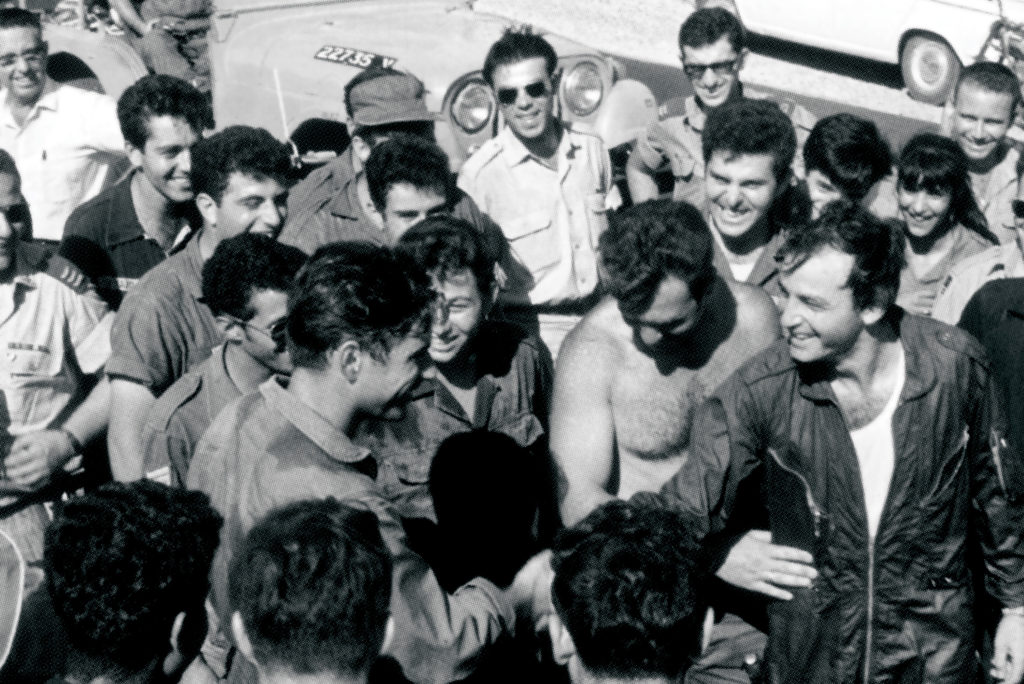
The battle was over in less than four minutes. The shorter-range Mirages had to land at Rephidim to refuel while the 69 Squadron F-4s returned to Ramat David, where they performed a high-speed flyover followed by a “wet down” and wild celebration by the rest of the base. After the Mirages landed, Koren found that his Shafrirs had been knocked off their racks when he jettisoned his fuel tanks, which was why he could not get a missile tone as he chased the low-flying MiG.
After the battle, one IAF pilot commented, “The Russians were terrible, but at the beginning it bothered us a bit, because we were used to an opponent that knew what he had to do to fight you—even if you were better. But for the Russian it seemed they were simply doing aerobatics instead of aerial combat.”
GET HISTORY’S GREATEST TALES—RIGHT IN YOUR INBOX
Subscribe to our HistoryNet Now! newsletter for the best of the past, delivered every Monday and Thursday.
In the end the Israelis had shot down five MiGs during the battle—two by F-4s and three by Mirages. The fifth MiG that Salmon and Spector had fired on crashed on landing, and the two split the victory credit.
For many years, the battle was kept secret. The commander of the Soviet air force arrived in Egypt the day after the battle “for a vacation in Luxor,” but it was later learned that when the general landed he gave the Soviet contingent very clear instructions: “Whoever talks to friends in the squadron or to family about this battle will leave Egypt, and the plane he flies on will take off for Siberia.” The Israeli pilots were also forbidden to discuss the engagement and could not paint Russian flag kill markings on their aircraft.
Marshall Michel is a retired U.S. Air Force colonel who flew F-4s and F-15s and was the air attaché to Israel from 1976 to 1980. He recommends for further reading: Israeli Mirage and Nesher Aces and Israeli F-4 Phantom II Aces, both by Shlomo Aloni; and Israeli Phantoms: The “Kurnass” in IDF/AF Service 1969–1988, by Andreas Klein and Shlomo Aloni.
This feature appeared in the March 2022 issue of Aviation History. Don’t miss an issue, Subscribe!
historynet magazines
Our 9 best-selling history titles feature in-depth storytelling and iconic imagery to engage and inform on the people, the wars, and the events that shaped America and the world.


